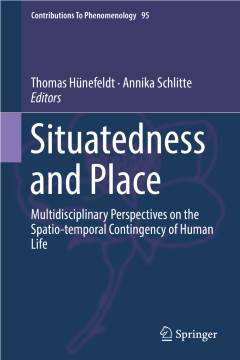Repository | Book | Chapter

(2018) Situatedness and place, Dordrecht, Springer.
Spatial conception of activities
settings, identity, and felt experience
William J. Clancey
pp. 81-109
The "situated" perspective in the analysis and design of socio-technical systems reveals how people conceive of activities as social-interactive settings, thus relating situated cognition to themes in the philosophy of place. In the socio-technical approach to developing technology, social scientists and computer scientists ground designs of automation (e.g., software, devices, vehicles) in ethnographic studies of how people interact with each other, tools and representations (e.g., computer displays), and their environment (e.g., facilities). These studies characterize people's ">activities – how they conceive of what they are doing in particular settings. A person's understanding of activities that a physical location affords for certain socio-technical purposes – the spatial conception of activities – makes a location a meaningful place. Technical knowledge and methods ("what I am doing now"), personal identity ("who I am being now"), and behavior norms (e.g., "how well I am doing now") co-develop in the activity setting. This paper elucidates the multi-dimensional physical, conceptual, and interactive nature of settings with examples from ethnographic studies of robotically mediated field science on Mars and analog expeditions on Earth. The felt and aesthetic experience of being in places that are Mars-like and working on Mars itself further reveals the emotional aspect of cognition that motivates and orients scientific work, exploration, and associated artistic expressions.
Publication details
DOI: 10.1007/978-3-319-92937-8_6
Full citation:
Clancey, W. J. (2018)., Spatial conception of activities: settings, identity, and felt experience, in A. Schlitte & T. Hünefeldt (eds.), Situatedness and place, Dordrecht, Springer, pp. 81-109.
This document is unfortunately not available for download at the moment.



